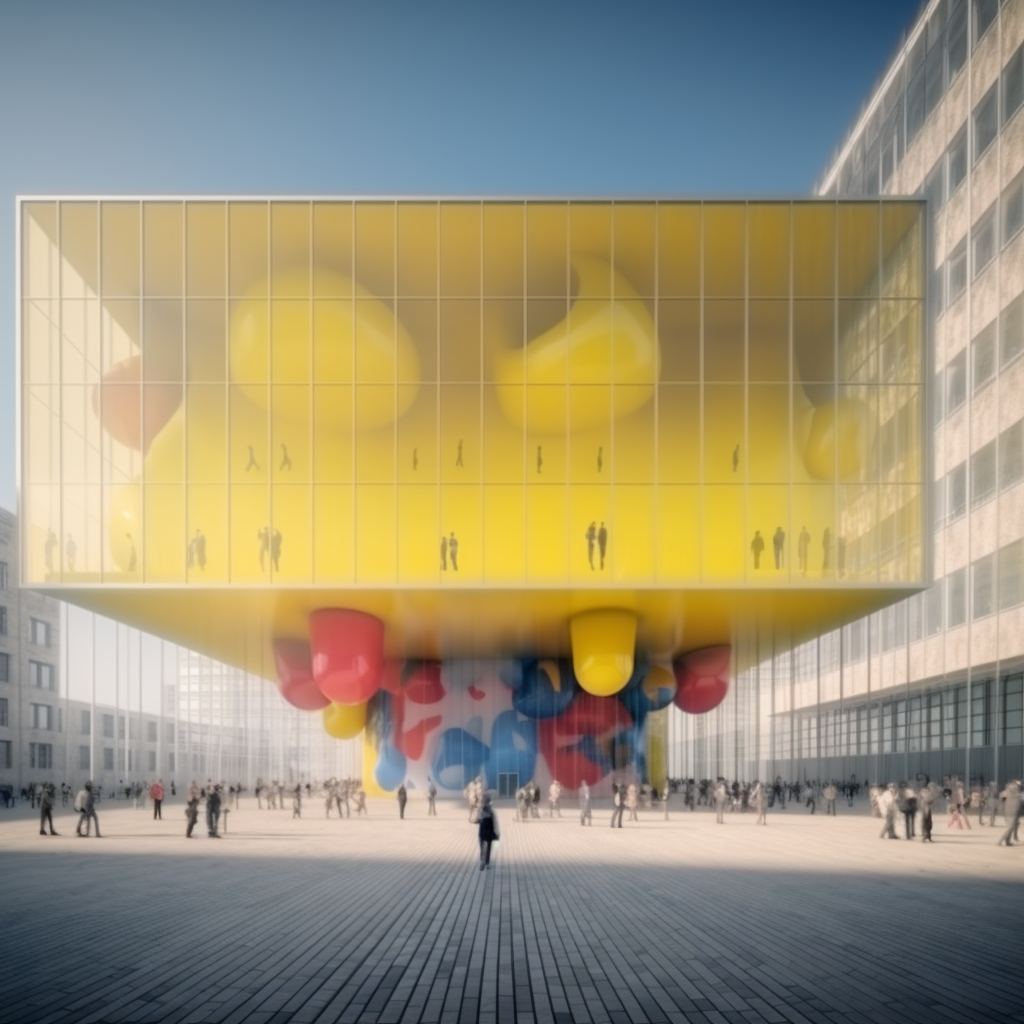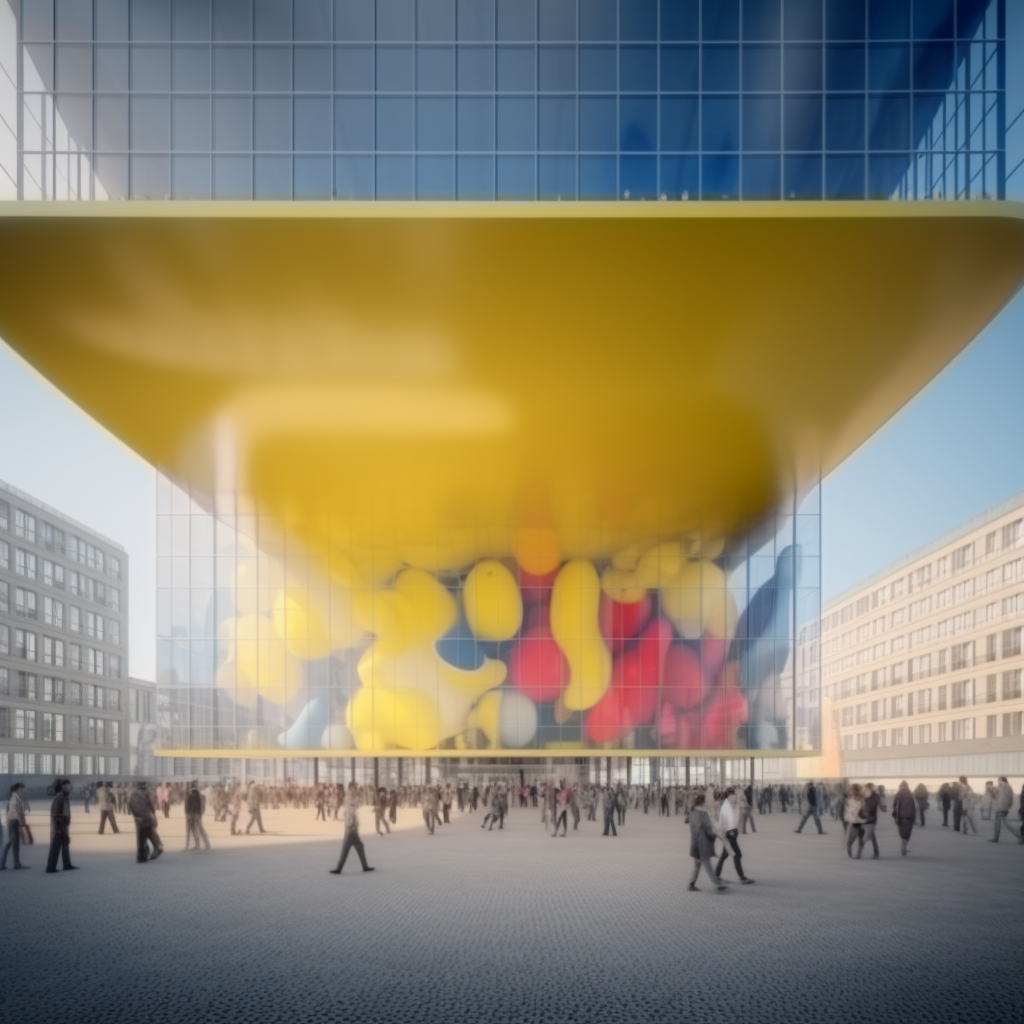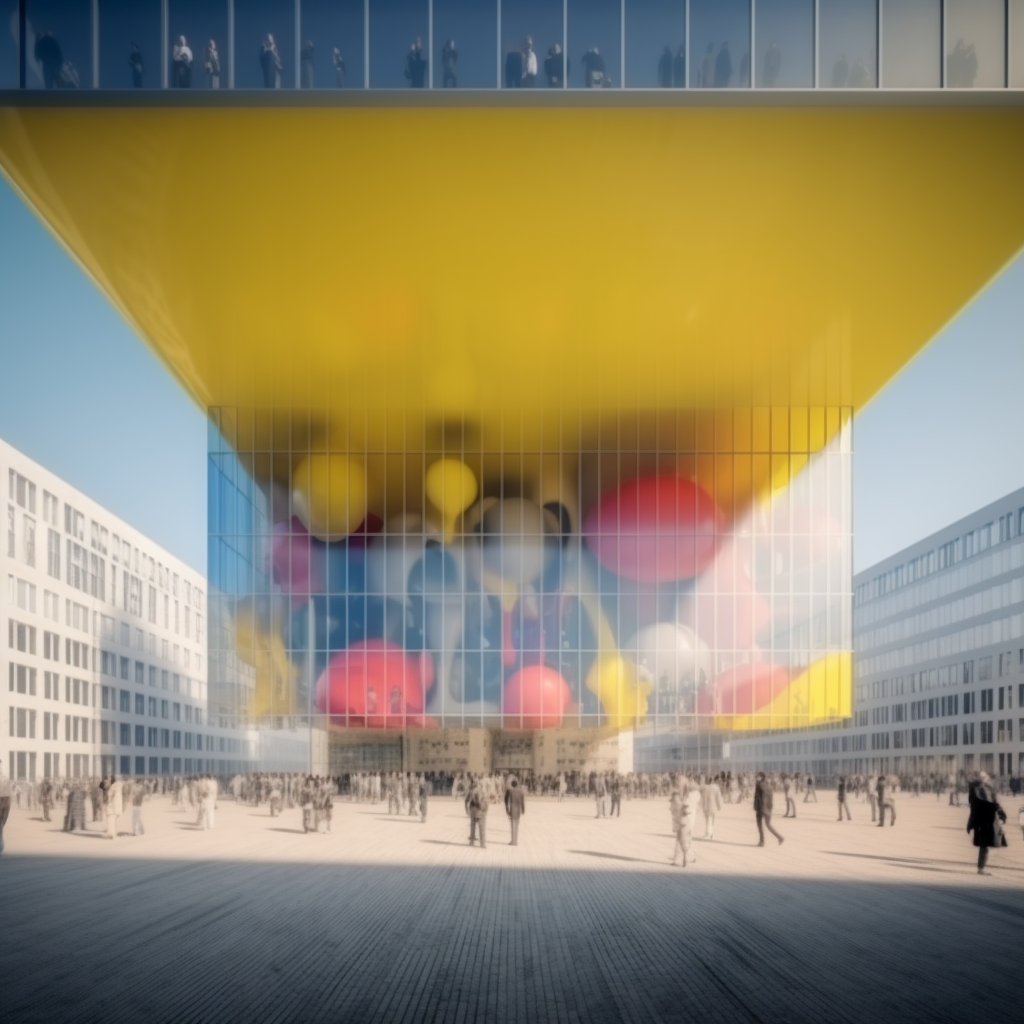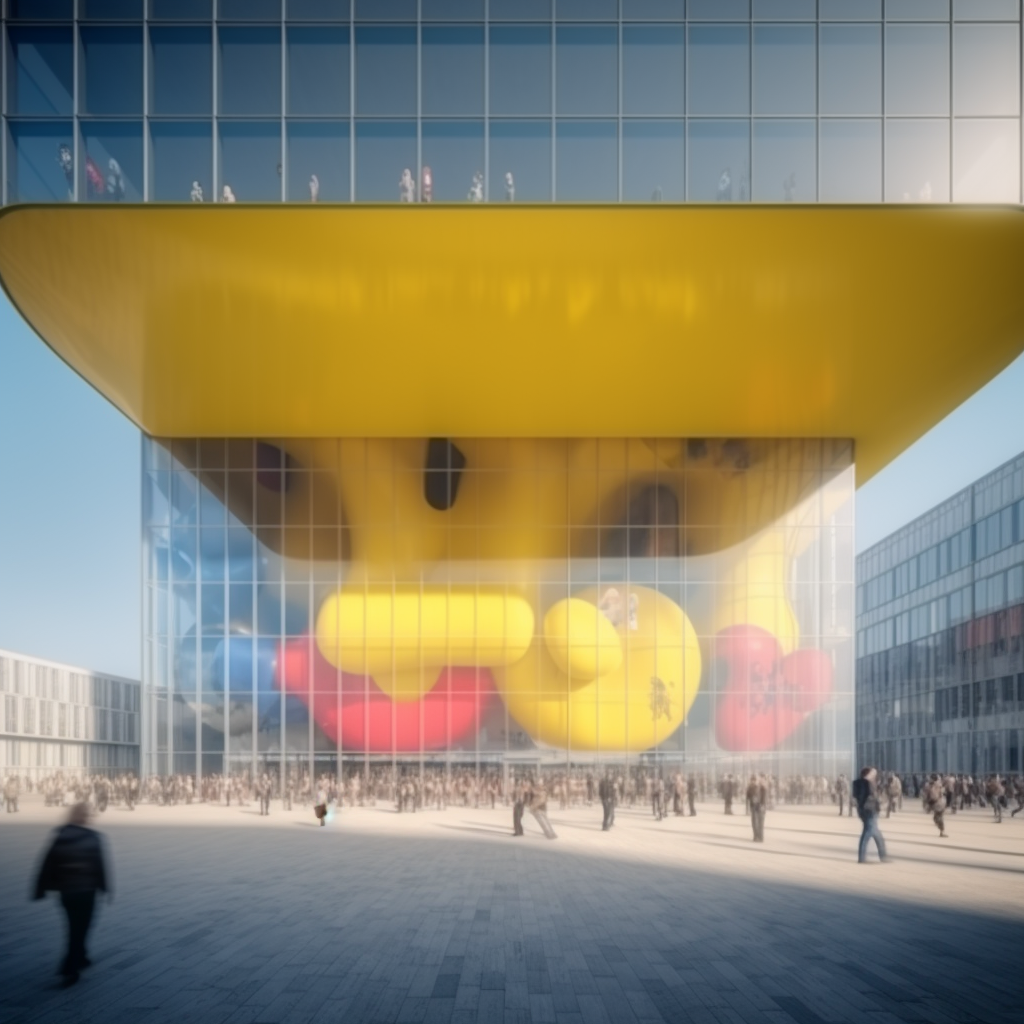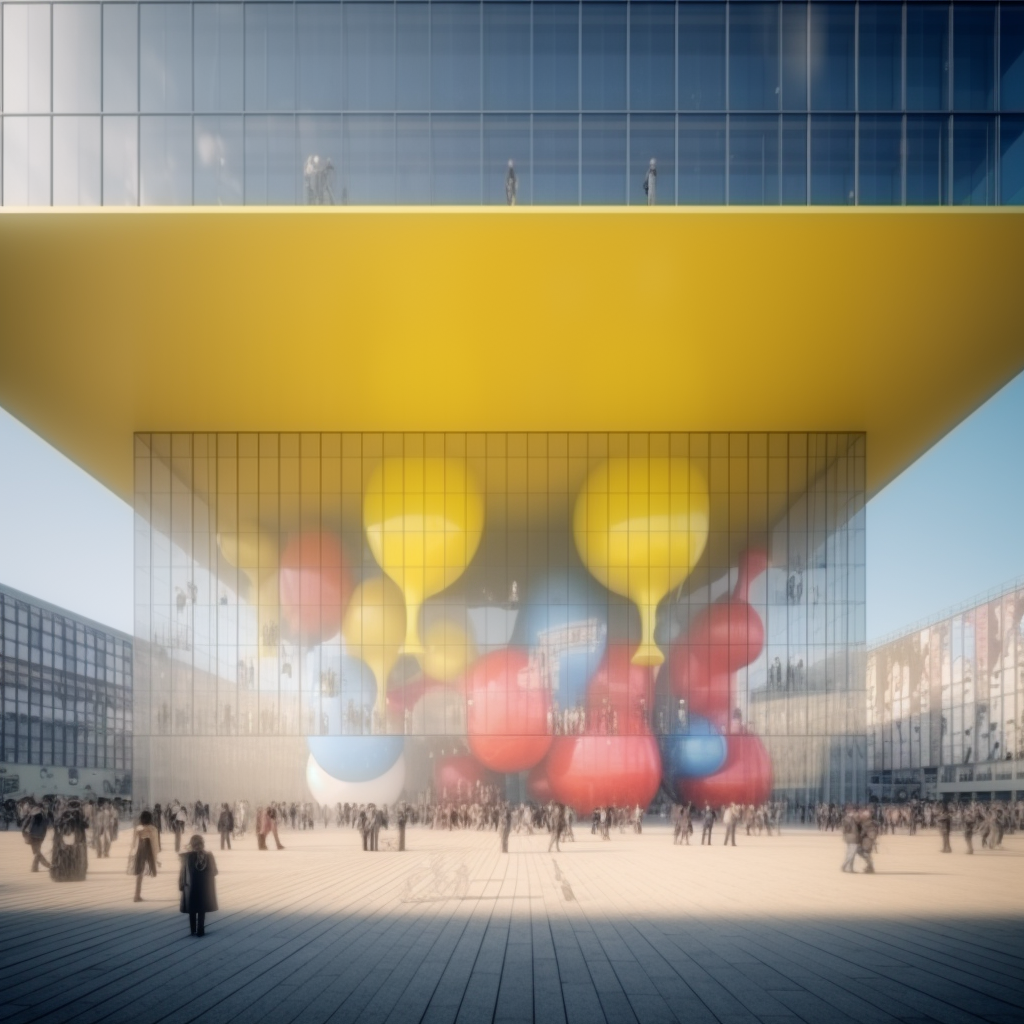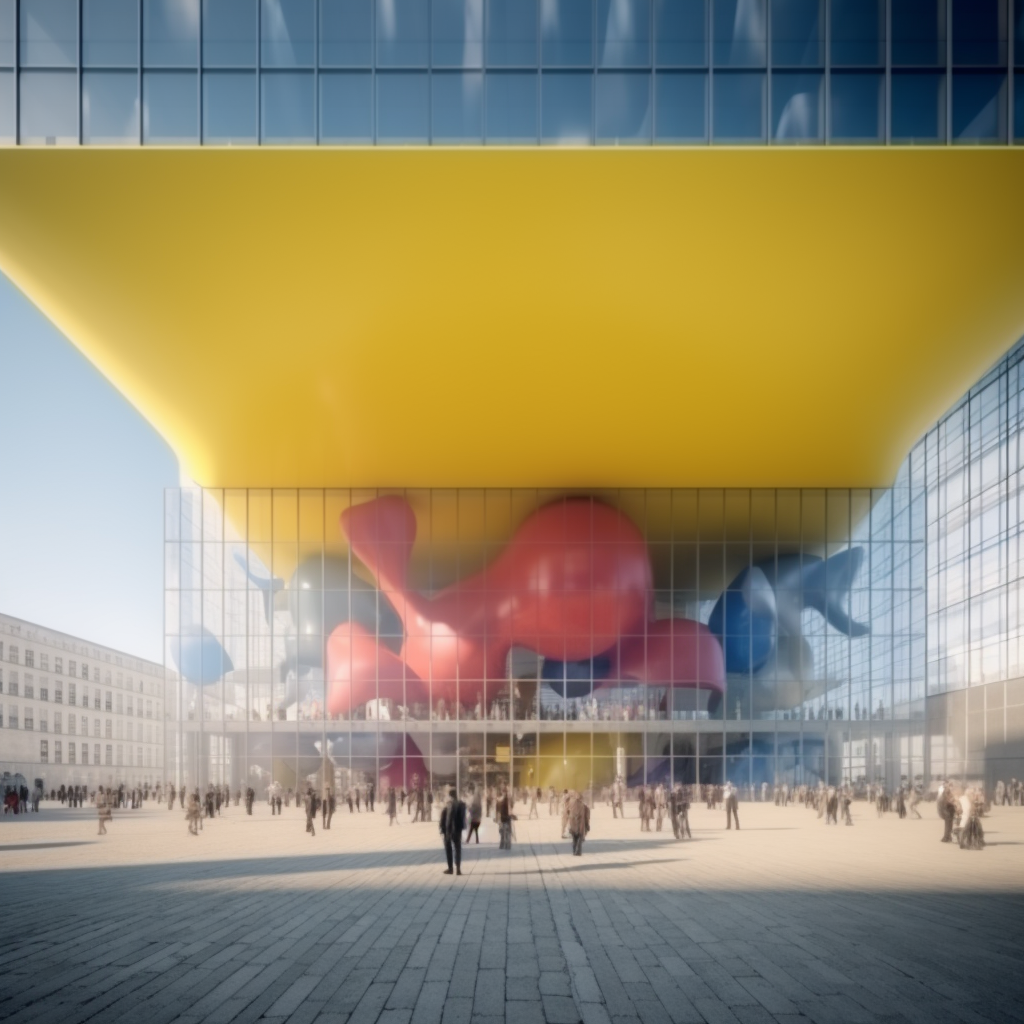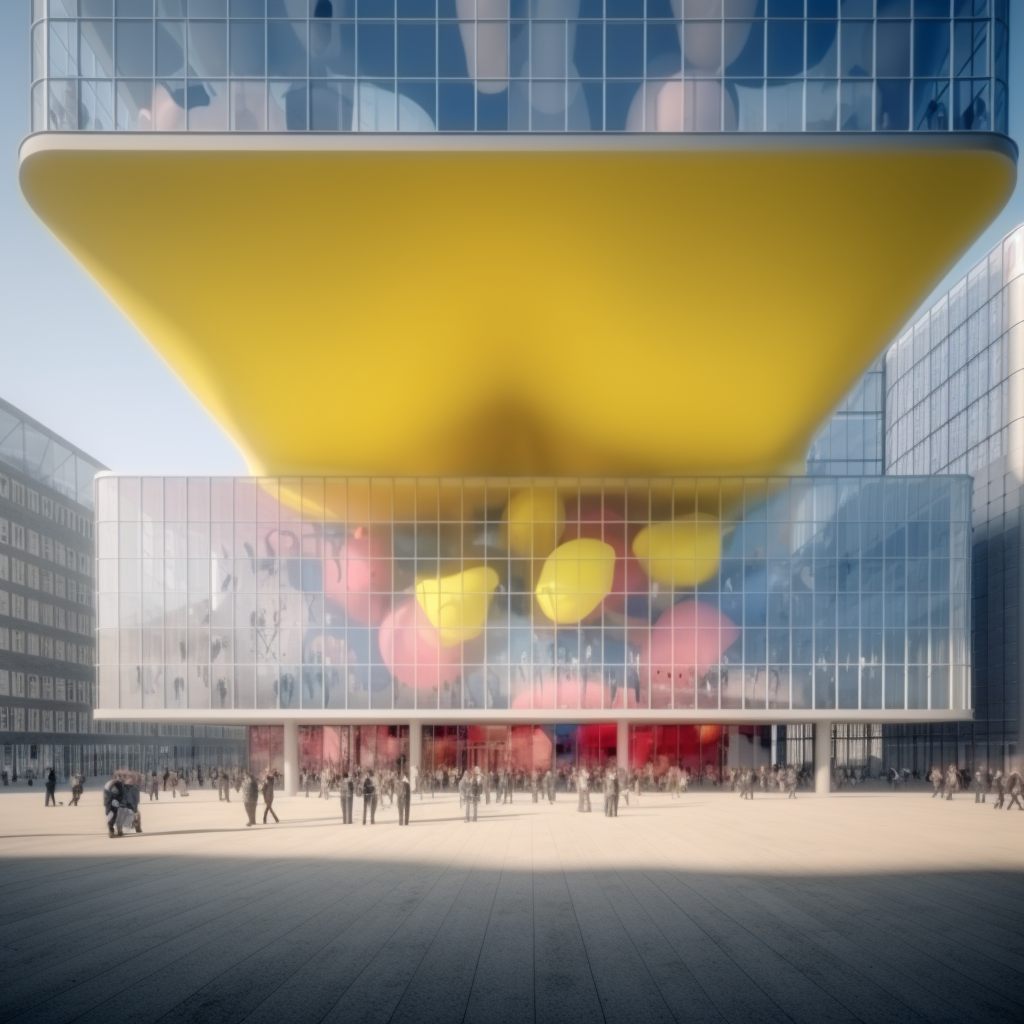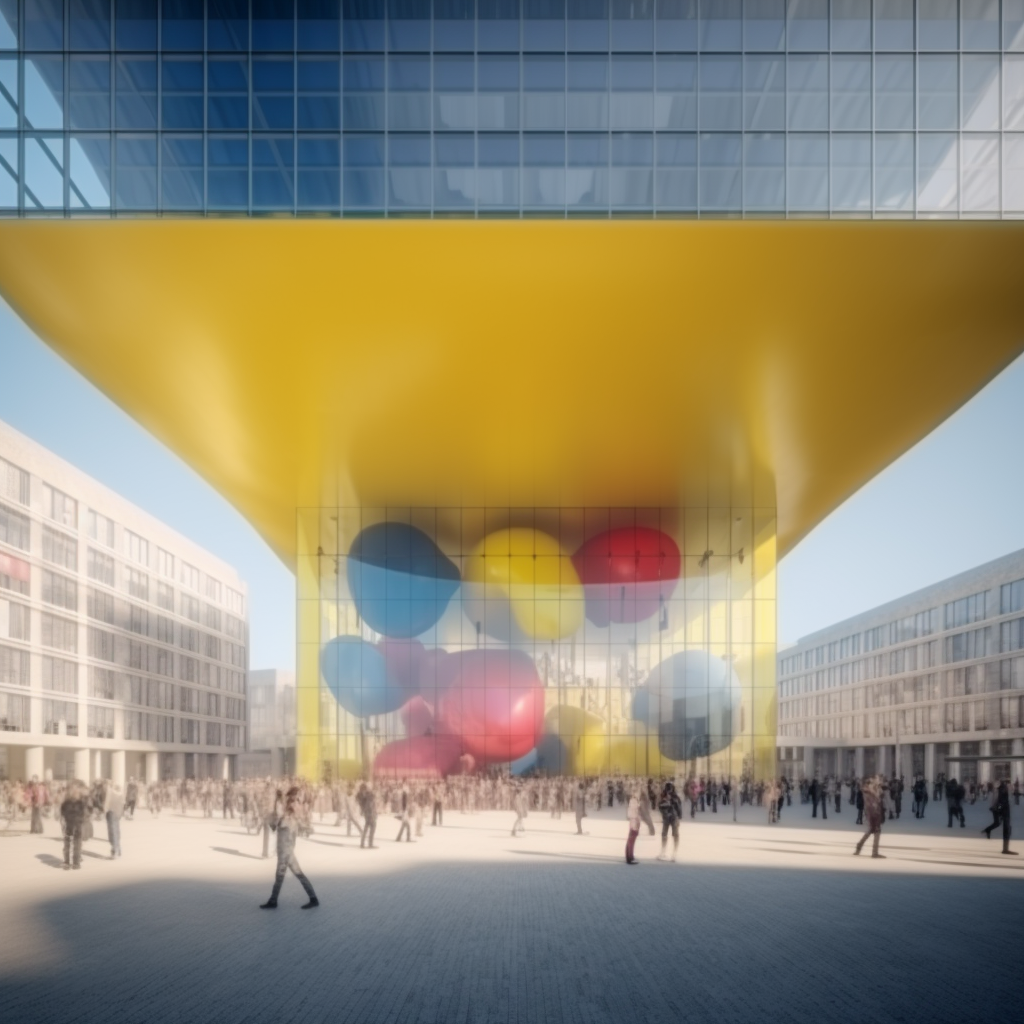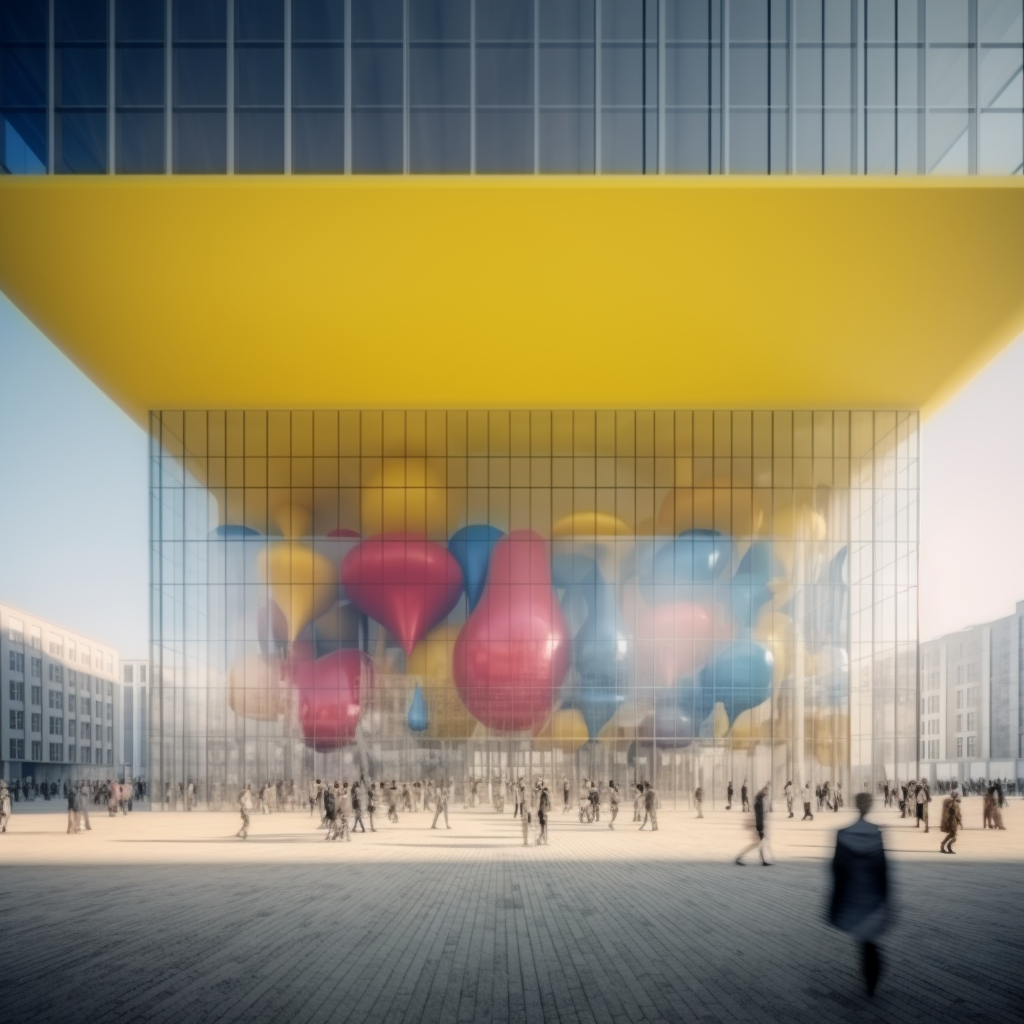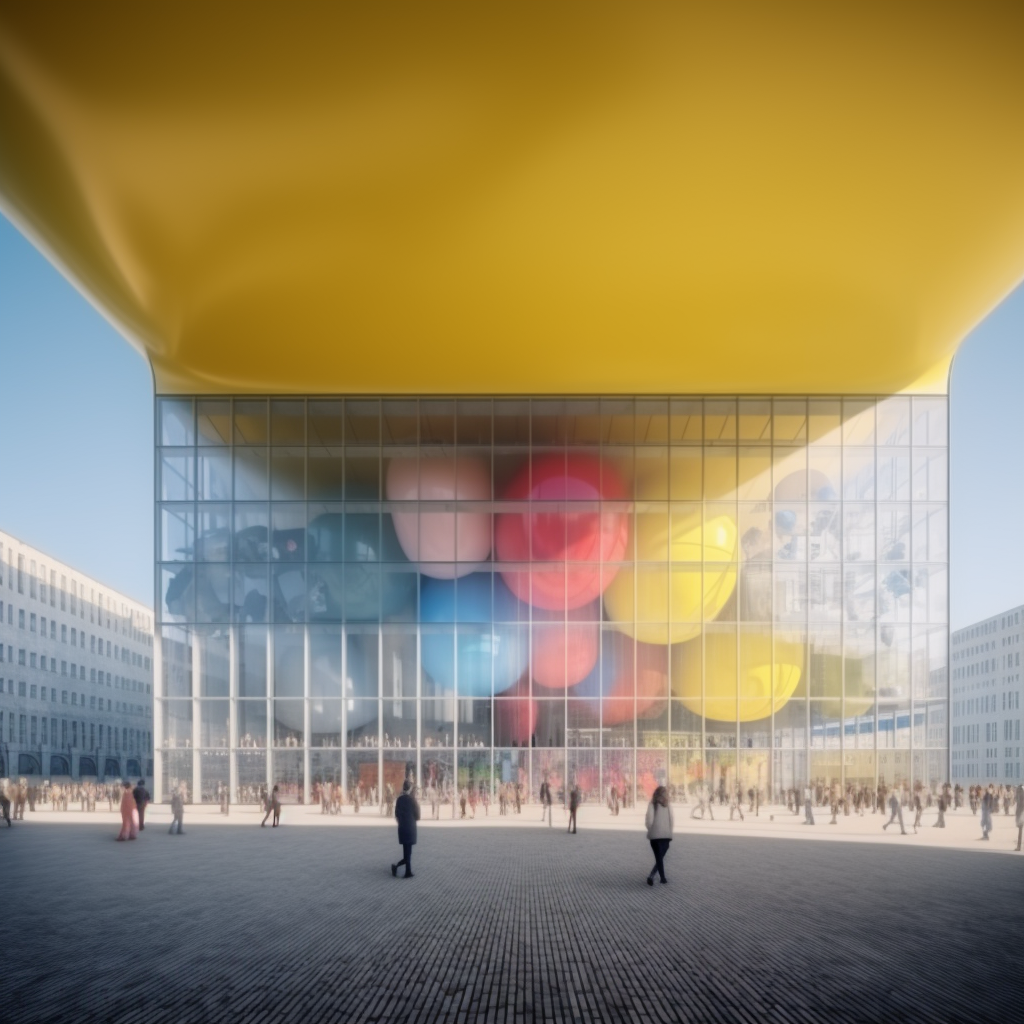BLENDED_MIDJOURNEY_V5.1
in a bustling city filled with towering skyscrapers and bustling streets, there lived a genderqueer person named Haru. Haru was an artist, an activist, and a firm believer that personal identity was a powerful political statement. They embraced their genderqueer identity with pride, knowing that their mere existence challenged societal norms and invited others to question their own understanding of gender.
As the city grappled with issues of inclusion and acceptance, Haru had a vision—a vision of a vibrant, yellow convention hall that would act as a physical representation of the city’s commitment to inclusivity. They believed that architecture could be more than just functional structures; it could be a statement, a safe space where individuals of all gender identities could gather, express themselves, and celebrate their queerness.
With a determined spirit, Haru embarked on a journey to bring their vision to life. They tirelessly sought support from the city’s leaders, rallying like-minded individuals who shared their passion for inclusivity. Together, they formed a collective dedicated to the construction of the yellow convention hall.
The construction process was not without its challenges. Haru faced skepticism and opposition from those resistant to change. But they remained steadfast, knowing that the boldness of their idea would eventually sway even the most skeptical hearts.
Months turned into years as the convention hall slowly took shape. Its vibrant yellow facade stood out against the city’s monochromatic buildings, a beacon of hope and acceptance. The interior was carefully designed, with versatile spaces that could accommodate a myriad of events—art exhibitions, performances, workshops, and community gatherings. It was a space where all identities were not only welcomed but celebrated.
Finally, the day of the grand opening arrived. People from all walks of life, regardless of their gender or sexual orientation, gathered in and around the yellow convention hall. The atmosphere buzzed with anticipation, as if the building itself held an air of magic.
As Haru stood before the crowd, they felt a profound sense of fulfillment. The convention hall, with its vibrant colors and inclusive design, was a testament to the power of architecture as a political statement. It symbolized a city that embraced diversity and actively sought to create safe spaces for everyone.
The convention hall quickly became a hub for the LGBTQIA+ community, a place where queer voices were amplified, art was celebrated, and solidarity was nurtured. It became a vital part of the city’s cultural fabric, fostering connections, understanding, and a sense of belonging.
Haru’s vision had become a reality, and their journey had not only transformed the cityscape but also the hearts and minds of its citizens. Through the yellow convention hall, they had created a lasting legacy of inclusion, proving that embracing personal identities could enrich the tapestry of a community and make it stronger, more vibrant, and truly reflective of the diversity that exists within it.
And as the years passed, the yellow convention hall remained a steadfast symbol, reminding future generations that being genderqueer was not just a personal statement, but a political one—an invitation for all to celebrate the beauty of individuality and forge a path towards a more inclusive future.
